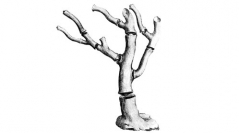

 Comptes Rendus Palevol
2 (6-7) - Pages 335-352
Comptes Rendus Palevol
2 (6-7) - Pages 335-352In The Structure of Evolutionary Theory, his last and largest book on evolution, Stephen Jay Gould conceives of the structure of evolutionary theory since Darwin as comprising three major propositions. First, natural selection is the most important direction-giving force in evolution. Second, it operates at the level of the individual organism. Third, selection can be extrapolated smoothly from its actions on individuals in living species throughout geologic time, to produce the gradual divergence of species and adaptations that characterizes the history of life. Challenges to each of these major propositions, according to Gould, can be of three kinds of severity. The most severe challenges, if true, would nullify one of the major propositions entirely, thus destroying the integration of the theory (and perhaps the logic and support of its other propositions). Other, less severe challenges would revise, modify, and expand the content and scope of one or another of the propositions, but not destroy any of them or the theory in toto. Still other, even less severe challenges add to what is known and extend the scope and possibilities of the theory, but do not call for a revision in its fundamental structure. Gould acknowledges that the theory has withstood all presumptive challenges that would destroy it, and has accommodated those that simply extend and add to it. His principal concern is with those challenges that would revise the theory substantially: for example, if processes other than natural selection were of great importance in evolution; if selection acted in important ways at the level of species and clades, and (or) at the level of the genes, alleles, and chromosomes; and if the extrapolation of what is known from living populations could not by itself explain many patterns of large-scale evolution seen in the fossil record. He thinks that, both through the history of evolution since Darwin and in the present day, challenges that substantially revise these basic propositions are valid, and that the theory needs to integrate them in order to retain the explanatory power that it has had for many decades.
Constraints, Darwinism, epistemology, evolutionary theory, Gould, heterochronies, hierarchy, History of Sciences, synthetic theory